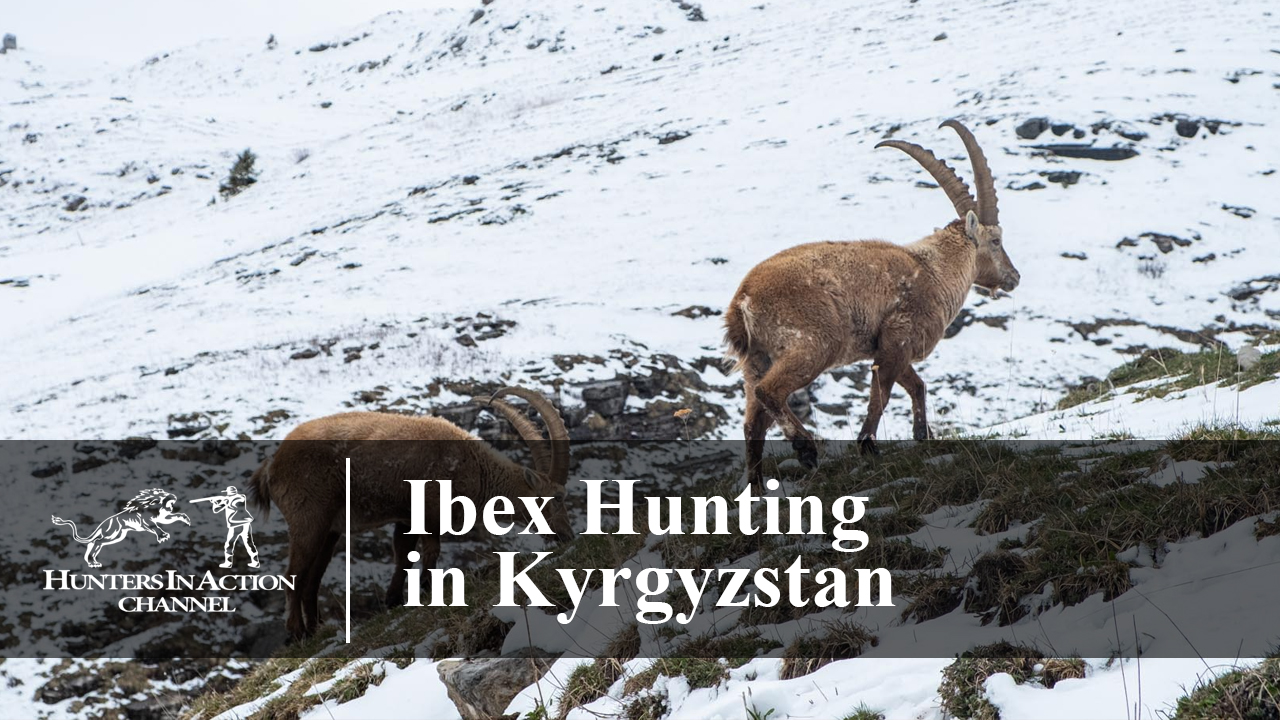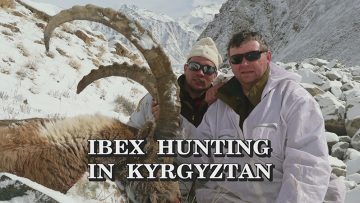Kyrgyzstan in Central Asia has 5-6000-meter tall mountain tops reaching to the sky as far as the eye can see. This is one of the most massive mountains on Earth: Tien-san. A bleak but breathtakingly beautiful wilderness isolated from civilization, where only the toughest creatures can survive. Hunters who wish to kill one or two of the species living here must brave the steep, rocky slopes. Above 4000 meters, the constant snow cover and the oxygen-deprived air further complicate the hunt. However, there are numerous dedicated hunters each year who will take on the severe physical pressure and the dangers associated with climbing rough terrain in order to seize the trophy of the king of the rocky cliffs, the long, reclining, thick horns of the ibex.
The ibex has perfectly adapted to the bleak conditions. It has learned to effectively utilise the poor vegetation low in nutrients. It is capable of surviving the winter even on the dry grass and lichen dug up from under the snow. Adult bucks may weigh up to, or even more than 130 kilograms (285 pounds). Adult bucks are cinnamon colored and typically lighter spots across the back. Older males wear prominent, dark-coloured beards easily noticable from a distance. The mature, dominant bucks usually live alone and only join the group of females and younger bucks in the mating season at the beginning of winter.
The dizzying heights and life-threatening cliffs are the ibex’s usual comfort zone. They navigate the breakneck slopes with incredible speed and precision, which is made possible by the rubber-like, ridged surface on their hooves. Everyone who wishes to catch up with an ibex will their work cut out for them, be that a hungry predator or a dedicated trophy hunter.
Ibexes often spend time at the safe heights of over 4000 meters. Only exceptionally tough winters with heavy snow can force them to the valleys of lower altitudes. “Lower” here is a relative term, as hunters would still have to go up to over 3000 meters high in the mountains to get close to these animals. The tough, short-legged Kyrgyz horses with massive muscles provide indispensable help; they are very resistent to deprivation and extreme weather conditions. Their bravery, strength and perseverance make it possible for the hunter to get close to the desired game on this pathless rocky terrain and even get back in one piece.
After hours of horseriding, the hunters will suddenly spot the ibexes on one of the slopes; if they get lucky, that is. However, upward or downward shots fired on slopes from a distance of 3-400 meters often pose a serious challenge to even the most experienced hunters.
Humans can only tread very slowly on this snow-covered, slippery, rocky terrain. To get close to the ibexes without being noticed requires a lot of skill and cleverness, especially since the animals navigate the terrain with playful ease. If there are more than one shootable bucks in the group, the hunter must be very careful to shoot the one that had been selected by his guide. The tough mountain game often doesn’t or barely shows signs if being hit, which means that the hunters must intensely concentrate not to lose sight of the hit game in the confusion after the shot.
The hunting challenges are not over with the successful stalking and the killing of the selected buck, because getting to the animal that fell hundreds of meters into the abyss over such an unforgiving terrain is going to be one tough task.
The hunters enlist the help of gravity to get the killed game closer to the horses waiting below.







